Papacy began 6 August 1978 Name Clemente y Successor Peter II | Predecessor Paul VI Papacy ended 22 March 2005 | |
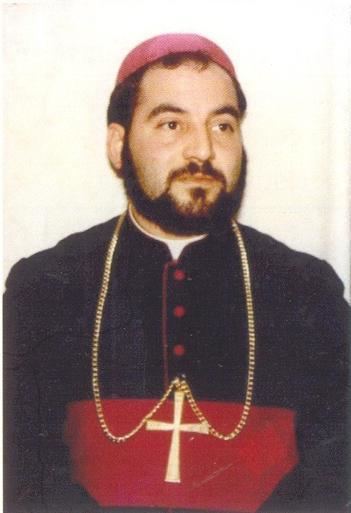 | ||
Church Palmarian Catholic Church Opposed to John Paul IJohn Paul II | ||
Documental los secretos de el palmar de troya a o 2014
Clemente Domínguez y Gómez (23 May 1946 – 22 March 2005) was a self-proclaimed successor of Pope Paul VI, and was recognised as Pope Gregory XVII by supporters of the Palmarian Catholic Church breakway movement in 1978. His claim was not taken seriously by mainstream Roman Catholics, the vast majority of whom were unaware of his existence.
Contents
- Documental los secretos de el palmar de troya a o 2014
- El palmar de troya iglesia cat lica palmariana y papa clemente dom nguez y g mez expuestos
- Controversially ordained
- Claim to the Papacy
- Other claimants to the name Pope Gregory XVII
- Roman Catholic Churchs view of Palmarianism
- In film
- References
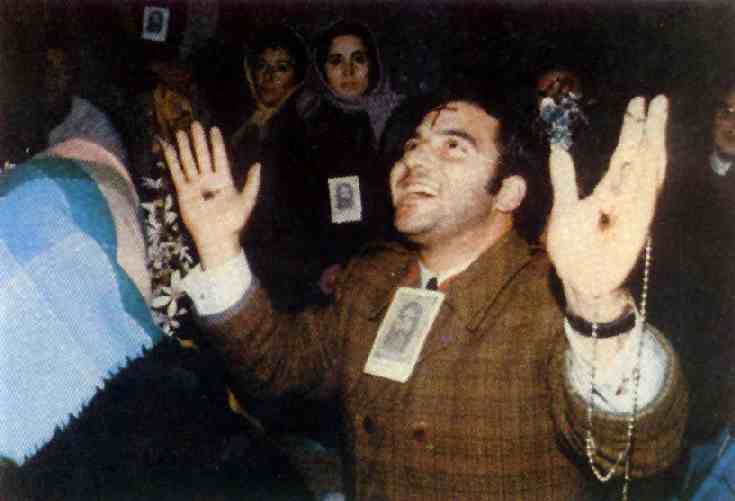
Clemente Domínguez y Gómez was born in Seville, Spain. He was known as la Voltio ("the she-volt") among the Seville gays. He became closely associated with the Palmar de Troya movement, which had its origins in an alleged apparition of the Blessed Virgin Mary on 30 March 1968 in El Palmar de Troya, a little village near Utrera in the Province of Seville. He claimed to have experienced visions of the Virgin Mary from 30 September 1969. He claimed that the Virgin in her messages condemned heresy and what was called progressivism, namely the reform of the Catholic Church underway as a result of Vatican II. His followers claimed he possessed the stigmata, the wounds of Jesus after crucifixion, on his hands. However, the Catholic Church cast doubts on the legitimacy of the alleged visions and apparitions.
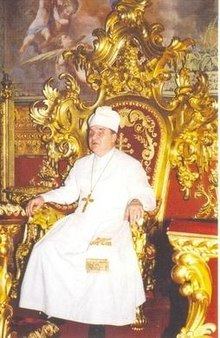
Clemente Domínguez' claim to be the Pope of the Catholic Church remains unaccepted by Roman Catholics, who accepted Pope John Paul I (1978) and Pope John Paul II (1978–2005) as the true successors of Pope Paul VI.
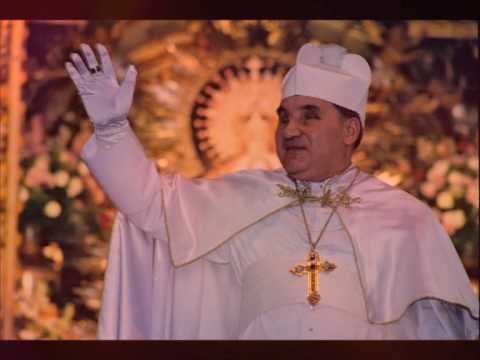
El palmar de troya iglesia cat lica palmariana y papa clemente dom nguez y g mez expuestos
Controversially ordained
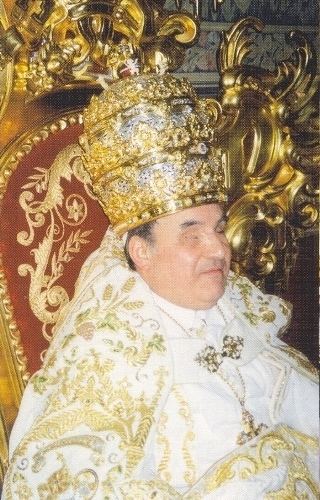
In December 1975, Clemente Domínguez founded his own religious order, The Carmelites of the Holy Face, allegedly upon instructions from the Blessed Virgin Mary in an apparition. Domínguez, who assumed the name Fr. Ferdinand, was ordained bishop by Roman Catholic Archbishop Pierre Martin Ngô Đình Thục. Archbishop Thục was subsequently excommunicated for his ordinations, which were deemed valid but illicit. (Although Archbishop Thuc had the power to ordain he did not have the authority to do so from Pope Paul VI, which is a requirement for licit episcopal holy orders in Roman Catholicism.) The ordinations and the validity of Domínguez' "mission" were disputed by the Spanish Roman Catholic hierarchy.
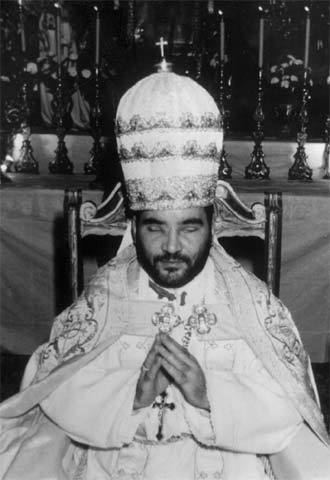
In May 1976, Domínguez lost his eyeballs in a car accident. He claimed further visions, including visions from Jesus, who he claimed told him: You shall be the Peter to come, the Pope who will consolidate the Faith and the Church in her integrity, who shall battle against heresy with great power, for legions of Angels shall assist you... me Great Pope Gregory, Glory of the Olives... He also claimed that Christ had named him His sub-Vicar, with the automatic right of succession to the papacy after Pope Paul VI. On 6 August 1978, Pope Paul died and Domínguez claimed the papacy, proclaiming himself Pope Gregory XVII.
Claim to the Papacy
Domínguez claimed that he was visited by Christ, along with St. Peter and St. Paul, who told him
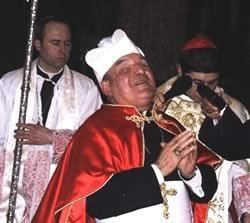
The reign of the Glory of the Olives has begun... A great day today, in which you are vested with the Office of Pope, on this feast of the Transfiguration on Mount Thabor,—Feastday of the Holy Face, of the Order of which you are the Founder and Father General. The great Pontificate of the Glory of the Olives begins: the Pope foretold by many mystics and in many prophecies; the Pope who unites in his veins the blood of Spain, the noble blood of Spain, with the true blood of France and with the blood of the chosen people, the Jewish people. There, the grandeur! He will not delay long before taking up the sword and fulfilling the mission of emperor and great monarch... It was also foretold in prophecies in past times how this Pope would be elected: namely through the direct intervention of the Apostles Saint Peter and Saint Paul. There is no other way of opposing the official election in Conclave in Rome from which the Antipope will come... Only the simple and humble of heart will recognize the true Pope: Pope Gregory XVII.
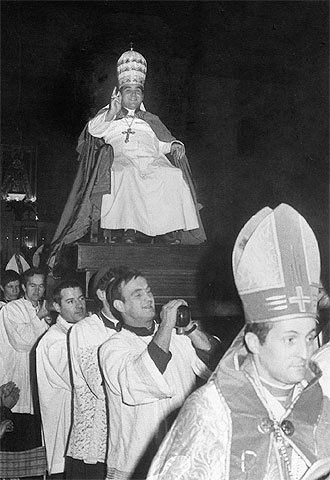
On 15 August 1978, he was crowned Pope by four of his newly created College of Cardinals in a coronation held in Seville in Spain. During his papacy, he purported to canonize Generalissimo Francisco Franco and Christopher Columbus as saints. According to his supporters, Pope Gregory XVII was destined to be the last Pope, and would be crucified and die in Jerusalem.
In the 1990s, Gregory XVII was accused of sexual impropriety with several of his priests and nuns. In 1997 he admitted to it and begged forgiveness. He died on 22 March 2005 in El Palmar de Troya, and was succeeded by Manuel Corral, who took the name Pope Peter II. Incidentally, the papacy of Gregory XVII closely overlapped that of Pope John Paul II. He died, aged only 58, a mere 11 days prior to the death of his "rival" as Pope.
Other claimants to the name 'Pope Gregory XVII'
Roman Catholic Church's view of Palmarianism
The Roman Catholic Church holds that the local Church of Rome cannot altogether lose the faith, since the Catholic Church is indefectible, according to Catholic teaching. [1] The Church therefore views the Palmarian claim that the See of St. Peter has been transferred by God from the Roman Pontiff to another as a heresy. Palmarians argue that the example of the Avignon exiles of the Popes in the Middle Ages proves that the Pope may reign outside of Rome. However, the Avignon Popes claimed to be and were seen as bishops of the diocese of Rome, not of a diocese of Avignon.
The Church distinguishes between public revelation and private revelation. Public revelation includes all the revelation in the Bible, as well as the oral tradition transmitted by Jesus and the Apostles. The sum of public revelation is known as the deposit of faith, and nothing can be added to or subtracted from the deposit of faith. Private revelations are those that have come to individuals or groups of people, but that "do not belong, however, to the deposit of faith. It is not their role to improve or complete Christ's definitive Revelation, but to help live more fully by it in a certain period of history" (Catechism of the Catholic Church, 67). The object of the faith of Catholics is the deposit of faith, but Domínguez's claim to the papacy is based on something that does not belong to the deposit of faith. Moreover, Domínguez based his claim on a private revelation that contradicted the above-mentioned doctrine of the indefectibility of the local Church of Rome. The Catholic Church's view of such an alleged private revelation is expressed in the same section of the Catechism of the Catholic Church as follows: "Christian faith cannot accept 'revelations' that claim to surpass or correct the Revelation of which Christ is the fulfillment, as is the case in certain non-Christian religions and also in certain recent sects which base themselves on such 'revelations'."
In film
In the 1986 Spanish comedy film Manuel y Clemente (in IMDB), Clemente is played by Ángel de Andrés López.
